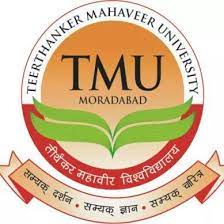What is Distance Learning? The Complete Guide
Table of Contents
Distance learning has transformed the way of pursuing education. This is a mode of learning that allows students to pursue their studies without being physically present in a traditional classroom.
With the rise of technology and the internet, distance learning has become a more accessible and popular mode of pursuing education than ever before.
The Evolution of Distance Learning
Early Forms of Distance Education
Distance learning is not a new concept. It was discovered in the 19th century when correspondence courses were offered via mail. In early forms, Students would receive study materials, complete assignments, and have to send them back to instructors, all this was done through postal services.
The Rise of Online Learning
Online Learning is growing rapidly in today’s world, and the internet has revolutionised distance learning. Online platforms, virtual classrooms, and digital resources have replaced the need for physical study materials, and physical presenting in classrooms, as it making education accessible from any corner of the world.
Apply For Admissions
How Distance Learning Works?
Platforms Used in Distance Learning
Distance learning is primarily conducted through online platforms such as different applications, portals, etc. These platforms host lectures, assignments, and quizzes in which students need to get involved. Some popular platforms for Distance Learning include Moodle, Google Classroom, Zoom, and more.
The Role of Technology
Technology plays an important role in distance learning. From video conferencing tools to learning management systems (LMS), students rely on technology to stay connected with their instructors and professors for learning.
Types of Distance Learning Programmes
Synchronous vs. Asynchronous Learning
- Synchronous learning requires students and instructors to be online at the same time, engaging in real-time discussions or lectures.
- Asynchronous learning, on the other hand, allows students to access materials and complete assignments at their own pace.
| Synchronous Learning | Asynchronous Learning |
| Real-time classes, fixed timetable | Flexible timing, learn at your own convenience |
| Immediate interaction with instructors/peers | Delayed communication via forums, emails and other services |
| Structured and scheduled | Self-paced and flexible |
| Best for Learners who prefer real-time engagement | Best for Independent learners who need flexibility |
Hybrid Learning Models
Hybrid learning is learning that combines traditional face-to-face interaction methods with online components and offers the best of both methods of learning. Students can engage in physical classrooms and also in online environments depending on the course design or structure.
Benefits of Distance Learning
Flexibility and Convenience
Distance learning offers parallel flexibility. Whether you're a working professional or a parent, you can pursue your studies without compromising other responsibilities and schedules.
Cost-Effectiveness
Distance learning is more affordable than traditional on-campus education. There are fewer expenses related to commuting, accommodation, and campus facilities. However, this may also vary according to different factors.
Personalised Learning Pace
Distance learning allows you to control the pace of your education. If you need extra time to grasp a concept, you can revisit the material without the pressure of keeping up with the entire class.
Challenges of Distance Learning
Technical Difficulties
As distance learning relies heavily on technology, technical issues can disturb the learning experience. Poor internet connections or software glitches can disrupt classes, courses, and learning, which causes frustration.
Lack of Face-to-Face Interaction
One drawback to distance learning is the limited face-to-face interaction. While virtual tools allow for communication, they may not fully replace the experience of person-to-person discussions.
Distance Learning Tools and Resources
Virtual Classrooms
Virtual classrooms, like Zoom or Microsoft Teams, simulate the experience of a real classroom. They enable live interactions, group discussions, and collaboration on projects digitally, which creates an effective digital learning environment.
Learning Management Systems (LMS)
LMS platforms, such as Blackboard and Canvas, play a crucial role in distance learning. They provide a centralised place for course study materials, assignments, grades, and communication with instructors.
Some Popular Distance Learning Universities
Uttar Pradesh Rajarshi Tandon Open University (UPRTOU)
UPRTOU is a state-open university in Allahabad (Prayagraj), Uttar Pradesh. It offers a wide range of undergraduate, postgraduate, diploma, and certificate programs through distance learning. The university focuses on providing education to students from diverse backgrounds, including working professionals, and individuals from remote areas. The programme spans various disciplines, such as arts, science, commerce, management, and vocational education.
Uttarakhand Open University (UOU)
Uttarakhand Open University is another option for distance learning in India. UOU is known for its flexibility in offering academic programmes that cover students from hilly and rural areas. The university provides courses in fields such as technology, humanities, law, and business management.
Dr. B.R. Ambedkar Open University (BRAOU)
Dr. B.R. Ambedkar Open University (BRAOU) was the first open university in India. The university’s primary objective is to provide higher education opportunities to individuals who are unable to attend traditional classes, especially women and disadvantaged sections of society. The university offers a wide range of undergraduate and postgraduate programs, along with diplomas and certificate courses across multiple disciplines.
TMU Centre for Distance and Online Education (TMU CDOE)
TMU CDOE is a key division of Teerthanker Mahaveer University. TMU CDOE offers flexible and affordable distance learning opportunities, with a strong emphasis on providing quality education to students across the country.
The centre provides a variety of programmes in fields like commerce, management, and information technology, aimed at equipping students with practical skills and theoretical knowledge that meet industry standards. The online education method of TMU CDOE is convenient for working professionals and students who prefer a more flexible schedule.
Explore the comparison between these distance-learning universities:
| Criteria | UPRTOU | UOU | BRAOU | TMU CDOE |
| Location | Allahabad (Prayagraj), Uttar Pradesh | Haldwani, Uttarakhand | Hyderabad, Telangana | Moradabad, Uttar Pradesh |
| Types of Programmes Offered | UG, PG, | UG, PG | UG, PG | UG, PG |
| Who can Apply | Rural, Remote, Working Professionals | Rural, Remote, Hill areas | Women, Disadvantaged, Working Professional | Working Professional, Students Across India |
| Streams | Arts, Science, Commerce, Management | Technology, Humanities, Law, Business | Multiple Disciplines (Arts, Science, etc.) | Commerce, Management, IT |
| Key Strength | Affordability, Wide Range of Programs | Flexibility, Accessibility | Social Inclusivity, Strong Alumni | Affordability, Industry-Standard Education, Flexibility/td> |
How to Succeed in Distance Learning
Time Management Tips
In distance learning, managing your time effectively is key to success. Creating a study schedule, setting deadlines for your tasks, and allocating specific hours for coursework, results in succeeding in Distance Learning.
Staying Motivated and Disciplined
Self-motivation and Self-Discipline is the crucial aspects of Distance learning. Without the structure of a physical classroom, the delay in action or work is common. To overcome this delay, Set achievable goals and reward yourself for completing tasks to stay motivated.
The Future of Distance Learning
The future of distance learning is encouraging and bright. As technology advances day-by-day, we will see more immersive learning through virtual reality (VR), artificial intelligence (AI), and more personalised learning models.
Who Can Benefit from Distance Learning?
Distance learning is ideal for:
Working professionals seeking career advancement
Parents who need flexible schedules
Students living in remote areas with limited access to physical schools
Lifelong learners interested in gaining new skills
Distance Learning vs. Traditional Learning
Both methods have their particular advantages, as distance learning offers more flexibility and accessibility while Traditional learning provides a structured environment with more hands-on experiences and direct interaction with instructors.
Conclusion
Distance learning has given a new shape to pursue education, as it offers flexibility and accessibility like never before. With the right tools, self-discipline, and a clear study plan, students can succeed in distance learning. The future of education is doubtlessly shifting towards more digital, flexible learning environments, making education more inclusive and easily accessible for everyone.
FAQs:-
- What do you mean by distance learning?
Distance learning means using digital tools, technology, and content for education and learning. It is everything from online courses and virtual classrooms that helps students engage with the content digitally in a more interactive way. - What is an example of distance learning?
An example of distance learning is online courses on multiple distance learning platforms. These platforms have a wide range of courses that learners can access on-demand and study at their own pace using videos, quizzes, and assignments. - What are the advantages of distance learning?
The advantages of distance learning are flexibility, to study anywhere at any time, cost savings on commuting and materials, and to use multimedia tools to enhance understanding and engagement with the content. - What is online learning?
Online learning is a method of education where students use the internet to access educational materials, courses, and resources for the purpose of learning. This mode of learning allows students to attend virtual classrooms, participate in discussions, complete assignments, and attend exams from any location. It is a flexible way to gain knowledge and skills without the need for physical presence in a traditional classroom. - What are the advantages of online learning?
The key advantage of online learning is its flexibility. Students can learn at their own convenience and schedule, which is especially beneficial for working professionals and those with other responsibilities. Additionally, online learning provides access to a vast array of courses and programs from universities and institutions worldwide digitally, breaking down geographical barriers. It is more cost-effective than traditional learning as it eliminates commuting and material costs







0 Comments
Voice your perspective!
Share your viewpoint concisely, conveying wisdom in minimal words.